The wild green and thorny cactus or cacti that you see in your backyard are not so bad, after all. Some of them are environment-friendly and also edible. However, a question often pops up—is cactus a vegetable or fruit?
Oddly enough, the cactus is both a vegetable and a fruit. It belongs to the rarest edible and healthy plant in the world, Cactaceae. There are various edible types of cactus plants, which you can domestically plant and grow.
If you’re interested to know more about this interesting plant, keep reading. We’ll cover edible cactus types, how to grow them, and whether cactus is poisonous or not.
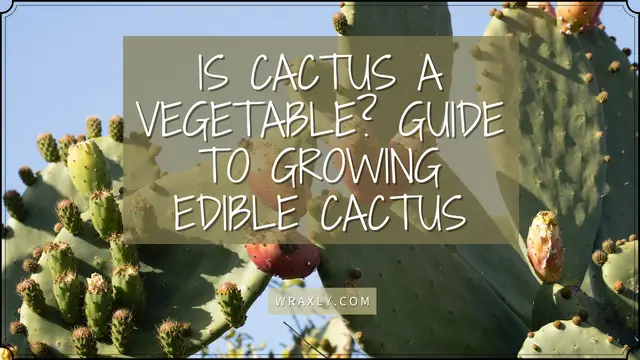
Can You Eat Cactus as a Safe and Healthy Vegetable?
Cactus is safe to eat as a vegetable or fruit. Nonetheless, you should be wary. Some cactus plants are edible whereas the others are toxic.
You should look for green, prickly, and succulent pads for consumption. You can even eat their flowers depending on their varieties.
How to Eat Cactus as a Vegetable
Here, we’re going to briefly share how to make cactus in a single dish recipe. It’s simple, and you can make an amazing dish out of it.
Check the cooking process of an edible cactus below (we’re using prickly pear cactus pads or nopales as a sample):
- Step 1: Buy or collect bright green and thick prickly pear cactus pads.
- Step 2: Dislodge or cut the clustered pads in clean water.
- Step 3: Use a vegetable peeler or a knife to slice off the thorns or spines. Chop the pads or nopales into cubes.
- Step 4: Now, light up the stove and heat some oil in a pan.
- Step 5: Pour the chopped cactus cubes into the oil. Keep nudging and flipping them with a stick until they transform from bright green to olive-like shade.
- Step 6: Let the sticky juice ooze out of the pads and heat up.
- Step 7: As the juice evaporates and somewhat mixes with the cubes, your dish is almost ready. You may add scrambled eggs and some sauce to make it a mouthwatering dish.
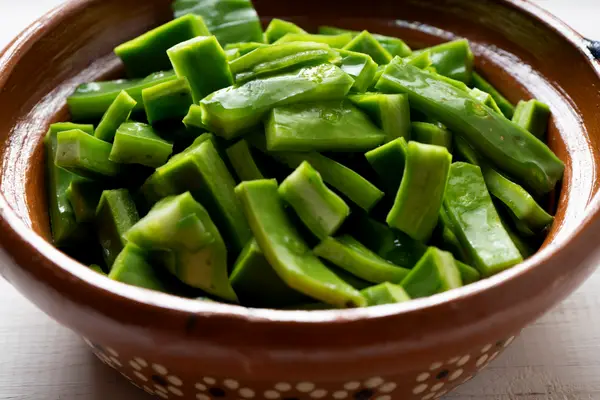
Is Cactus Healthy to Eat?
Yes, cactus is a safe and healthy food. According to studies, it has some major health benefits. Let’s check out some of the benefits of eating cactus below:
- Cactus helps in controlling your cholesterol level. Due to having rich fiber in its nopales and fruits, cactus can reduce the cholesterol level in the blood. It can reduce the risk of strokes and other heart diseases.
- Studies reported that eating cactus as a vegetable can control the blood sugar level. Simply put, it’s an economic way to control blood sugar for those with diabetes.
- Cactus boosts immunity as they’re rich in vitamin C. Vitamin C is responsible for increasing white blood cells in your body, enabling you to fight the virus and infections.
- Cactus fruits and vegetables have a boatload of nutrients, such as vitamin A, vitamin C, manganese, potassium, iron, calcium, copper, etc. They contain anti-inflammatory properties, which reduce the risks of heart diseases.
- Believe it or not, cactus juice can help in reducing hangovers after drinking alcohol. Its anti-inflammatory properties like vitamin C and A are capable of limiting drunkenness and headache.
How to Grow Cactus in Your Garden (Edible Types Only)
Types of cactus that are safe to eat can grow indoors and outdoors.
However, you must put them in soil with the correct draining and moisture control capacity. Cactus are robust plants. They require suitable soil for excessive or low watering conditions.
Below, we’re sharing three edible cacti with information on how to grow them. Remember, most of them require similar planting processes.
1) Prickly Pear Cactus
The healthy and amazing prickly pear is a common cactus fruit. You might’ve eaten it before as snacks or salads. The steps to plant and grow it are as follows:
- Step 1: Take any type of container and fill it with drainable soil (sandy).
- Step 2: Dig holes in the soil according to the cactus root ball’s depth and its stem width.
- Step 3: Put the prickly pear cactus in the hole. Fill the gap around the root ball with the soil.
- Step 4: Water the plant moderately (water it every 10-15 days).
- Step 5: Place the pot facing the north in direct sunlight. Remember, prickly pear requires bright sunlight at least 5-6 hours a day to grow.
The little prickly pear cactus may take up to four years to produce its first fruit.
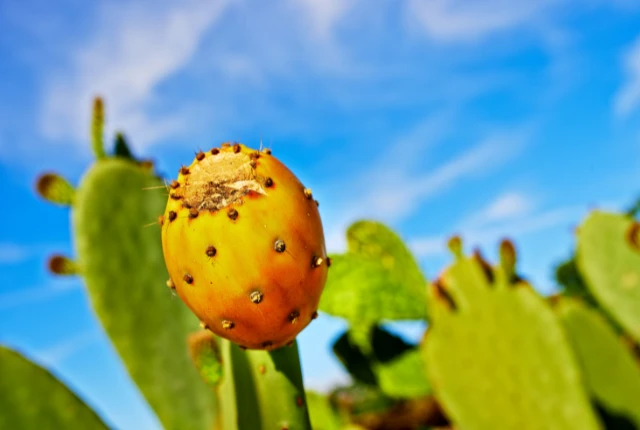
2) Dragon Fruit Cactus
You already know about dragon fruit, but you may not know that it is a cactus fruit. This attractive spiky fruit has a taste similar to pears and kiwis. The smoothie recipe of this fruit is to die for during scorching summer days.
Here’s how to plant and grow them:
- Step 1: Fill in a container with drainable soil.
- Step 2: Dig a hole and plant the dragon fruit as you did the prickly pear.
- Step 3: Place the container somewhere facing the south in direct sunlight. A dragon fruit cactus needs sunlight 7-8 hours a day.
If you sow the seeds of the dragon fruit cactus, it may take up to six years for the first fruit to sprout up, whereas a cutting can take one year or less to produce its first fruit.
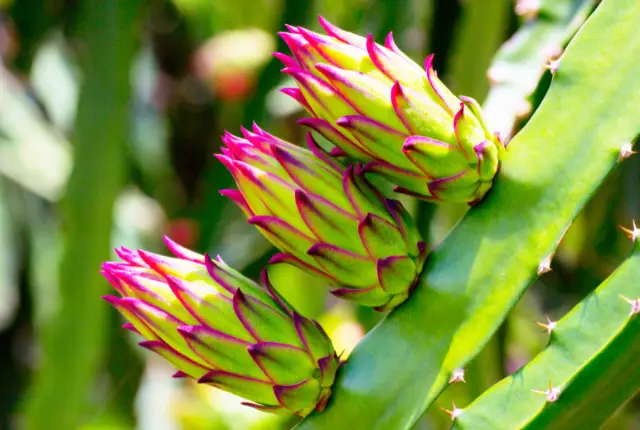
3) Elephant Bush Cactus
Elephant bush cactus are well-known for their sour taste and crunchy texture. You can use their leaves in salads and soup for a fabulous aroma. Check out their planting and growing method below:
- Step 1: Make a good mix of drainable soil and potting soil in a container or pot.
- Step 2: Dig the soil and set the plant as instructed for the above two variants.
- Step 3: Water it moderately.
- Step 4: Put the pot on the south-facing ground where the sunlight is indirect. Excessive sunlight is harmful to elephant bush cactus.
Now that you know how to grow cactus at home, select your favorite edible cactus type to plant and harvest.
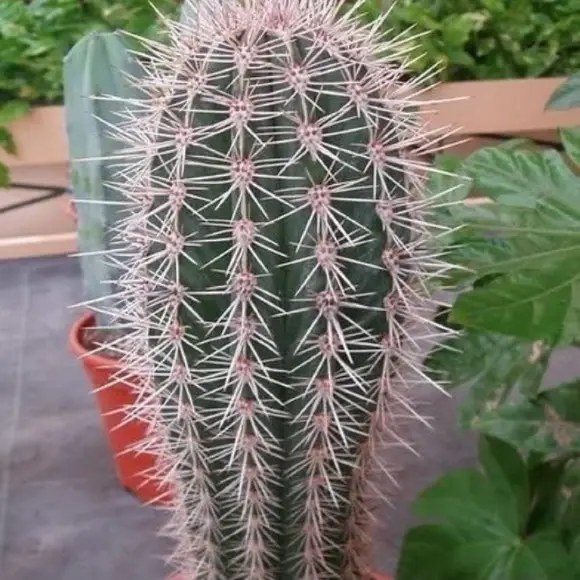
Is Cactus Poisonous?
A relevant question is—is cactus a vegetable that’s poisonous to the human body? There are some cactus varieties that contain toxins. Hence, you must know to differentiate between poisonous cactus and edible cactus.
Most cactus produce some toxic compounds inside their body that hardly goes through the human system. Eating them can lead to diarrhea, nausea, paralysis, and psychotic effects.
Some notable poisonous cactus are:
- San Pedro cactus
- Barrel cactus
- Cholla cactus
- Peyote Cactus
- The Peruvian torch
Most of these cactus types contain psychedelic alkaloids (hallucinogenic toxins) which can cause hallucination, tremors, vomiting, etc.
Final Thoughts on Edible Cactus
We’ve covered cactus, including the burning question—is cactus a vegetable that you can enjoy as part of a regular diet?
Well, it’s clear now that cactus is safe to consume as fruits and vegetables. Cactus fruits, such as dragon fruit, prickly pear, and elephant bush are juicy, crunchy, and nutrient snacks. Conversely, the cactus pads and leaves can add to your gourmet dishes in taste and aroma.
Now you’ve learned how to grow cactus at home. Hopefully, our article on this topic has been a helpful guide for you.

Darrell has a passion for gardening that he inherited from his father. Go here to read more about the influence his father played in his love for gardening. If you want to send Darrell a quick message, then visit his contact page here.

![How to Water Indoor Plants [Plant Care 101]](https://wraxly.com/wp-content/uploads/2021/03/How-to-Water-Indoor-Plants-Plant-Care-101-1200-1024x576.webp)

![Growing Plants from Cuttings [A Simple Guide]](https://wraxly.com/wp-content/uploads/2021/03/Growing-Plants-from-Cuttings-A-Simple-Guide-1200-1024x576.webp)